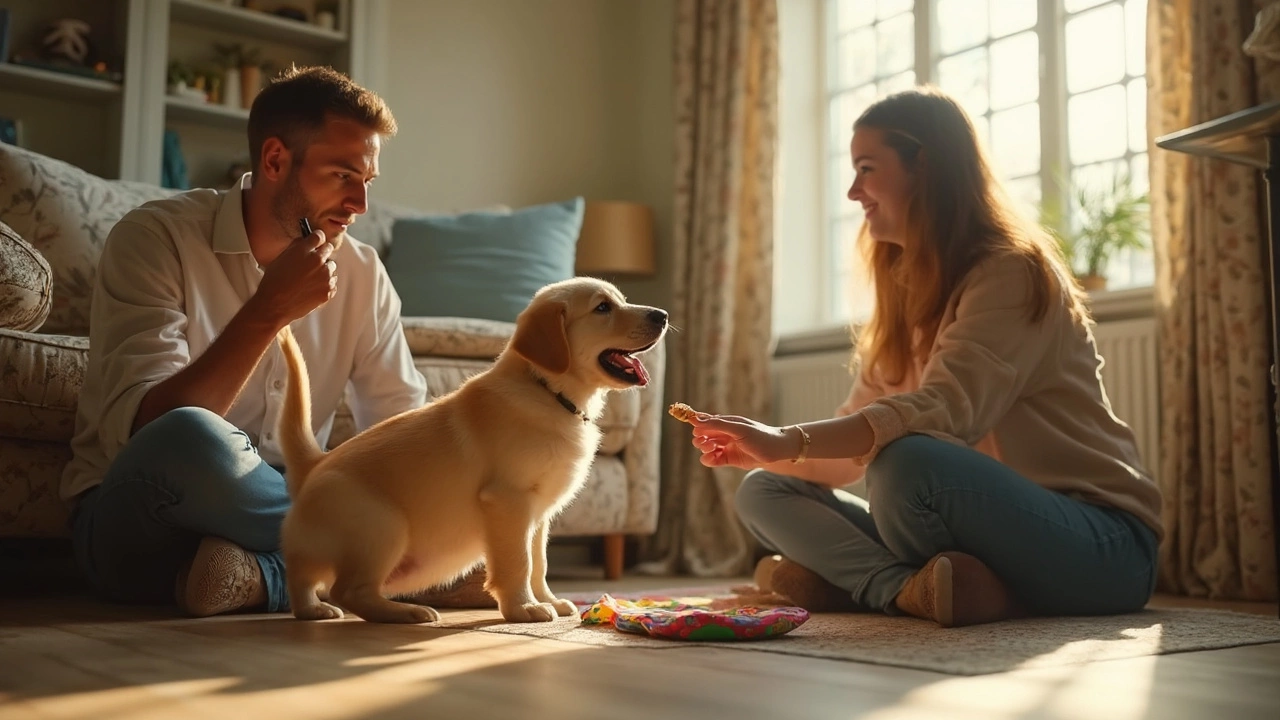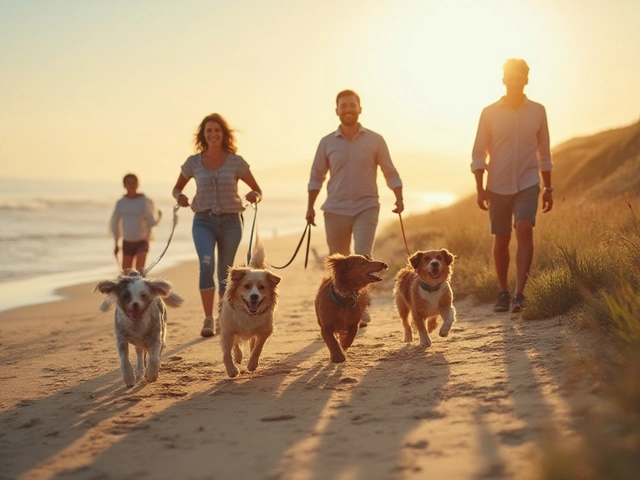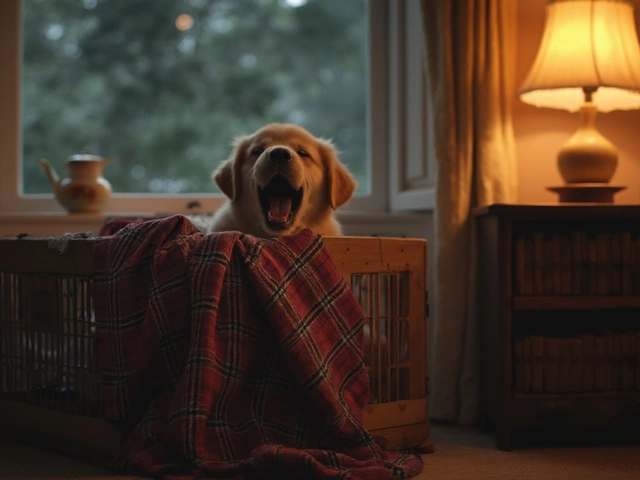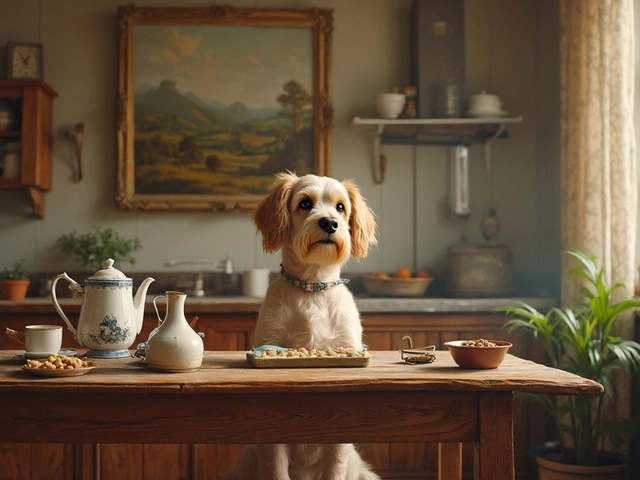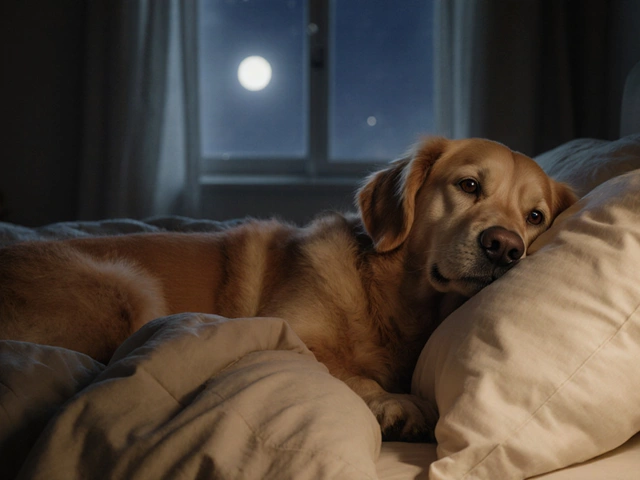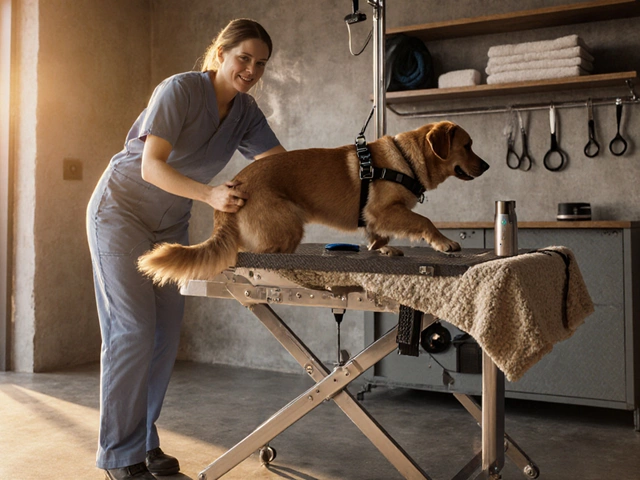Ever felt that frustration when your puppy squats right in the middle of your living room rug? It's tempting to scold or even punish them, but that actually slows down their learning. Puppies just don't connect your reaction with their pee puddle, especially if even a few seconds have gone by.
Instead, think like a detective. What led up to the accident? Did you miss the signs that your puppy needed to go out? Understanding the why often makes dealing with these moments way easier. Training a puppy is all about setting them up for success, not about making them feel bad for mistakes they can’t understand.
It's a relief to know that there are better, kinder ways to help your puppy learn than punishment. It starts with patience, timing, and—yes—having the right toys around. Let's look at how you can use toys, routine, and quick thinking to fix those pee problems without the drama.
- Why Punishment Doesn’t Work
- The Right Way to Respond to Accidents
- Timing, Consistency, and Supervision
- Using Puppy Toys in House Training
- Common Mistakes and How to Avoid Them
Why Punishment Doesn’t Work
The old advice about rubbing a puppy’s nose in their mess or yelling when they pee inside? It just doesn’t work and can make puppy training harder. Puppies aren’t being naughty when they have accidents. Most of the time, they simply haven’t learned what you want yet. Their brains can’t make the connection between your anger and the act of peeing, especially if you react even a minute after the accident happens.
When you punish your puppy for peeing in the house, all you really teach them is to be scared of you, or to sneak off and pee where you can’t see them—like behind the couch. According to vets at the American Veterinary Society of Animal Behavior, punishment is more likely to create fear and anxiety than to teach the right behavior. You want your pup to trust you, not to stress about their every move.
Let’s be real, timing matters a lot. If you catch a puppy mid-pee and scare them, they might just get confused. They aren’t connecting the dots that “pee on rug = mad human.” Instead, they think, “peeing = scary stuff” and may stop peeing when you’re watching, saving it for when you turn your back.
Stats from training centers show that positive methods are about twice as effective as punishment when teaching house training. Here’s what happens when owners use positive reinforcement vs. punishment:
| Training Method | Average Days to Learn | Chances of Relapse |
|---|---|---|
| Reward-based | 14-21 | Low |
| Punishment | 30+ | High |
Instead of focusing on punishment, give your puppy good reasons to do the right thing. Reward them with treats, happy praise, or even a favorite puppy toy right after they pee outside. This is what really speeds up puppy training and creates habits that last.
The Right Way to Respond to Accidents
Catching your puppy in the act is your golden moment. If you see your pup peeing inside, calmly interrupt with a simple sound, like a soft "uh-uh" or clap. Don’t shout or act angry—scaring your puppy can make matters worse. Just scoop them up and take them outside to the right spot. If they finish up outdoors, offer big praise and a treat. This makes it super clear that peeing outside is what you love to see.
If you find a puddle after the fact, let it go. Puppies can’t connect old pee with your disappointment. Scolding or rubbing their nose in it will just make them confused and anxious. Instead, focus on prevention and positive reinforcement. This builds trust, which helps your house training stick faster.
Here’s a quick run-down of what helps most people handle the moment:
- Interrupt gently if you catch them peeing indoors.
- Take your puppy out immediately to their potty spot.
- Reward with treats and happy words when they pee outside.
- Clean accidents quickly with a pet-safe enzymatic cleaner—this kills the odor, so your pup isn’t tempted to repeat the crime.
- Don’t punish or scold if you miss the moment—just make a note to watch them closer next time.
Facts back this up. The American Veterinary Society of Animal Behavior says positive reinforcement works better and faster for teaching good bathroom habits, and that punishment just confuses puppies. About 86% of trainers recommend reward-based methods for toilet training.
| What To Do | What NOT To Do |
|---|---|
| Interrupt calmly if caught in the act | Shout or punish |
| Take outside to finish and praise | Scold after the fact |
| Clean mess with enzymatic cleaner | Ignore the smell (it attracts repeat accidents) |
One more tip: use a special word like “outside” or “potty” every time you take your puppy out. Eventually, they’ll connect the dot. And don’t forget those puppy toys—giving your pup something to chew or play with after they potty outside turns the whole outing into a win.
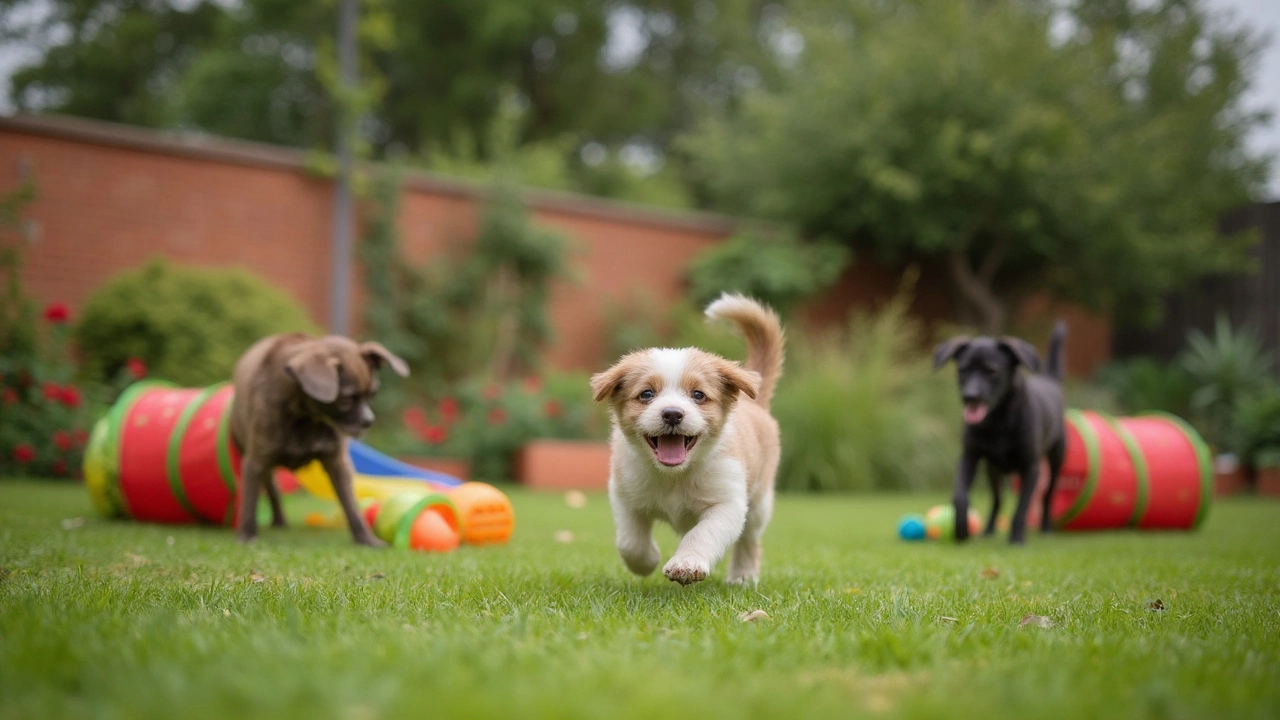
Timing, Consistency, and Supervision
If you want your puppy to actually “get” house training, it’s all about catching the right moment, keeping things steady, and watching them like a hawk. Puppies can’t hold it very long—at just eight weeks old, most will need to pee at least every two hours, sometimes more if they’ve been playing with puppy toys or just woke up.
It’s a good idea to stick to a set potty schedule. Here’s a basic one lots of trainers recommend:
- First thing in the morning and right before bedtime
- Right after eating or drinking
- After play sessions, especially with stimulating new puppy toys
- After waking up from naps
- Every hour or two throughout the day for really young pups
Consistency is what helps your puppy connect the dots. Take them to the same potty spot each time and use a phrase like “go potty” so they learn what you expect. If you catch your pup starting to squat, calmly scoop them up and get them outside—don’t yell, just move quick. The magic is in immediate response.
Supervision is non-negotiable when your pup’s still learning. If you can’t keep your eyes on them, use a crate or a puppy-proofed area to avoid accidents in the house. Crates aren’t punishment; they help puppies learn to hold their bladder since most won’t go where they sleep.
If you’re wondering why all this matters, look at the numbers: according to the American Veterinary Medical Association, more than 75% of house soiling cases clear up fast with a steady routine, close supervision, and fast reaction when accidents happen. The sooner you catch and redirect, the quicker your puppy understands. Forget punishment—your best tools are timing, consistency, and a sharp eye.
| Age | Time Between Potty Breaks |
|---|---|
| 8 weeks | 1-2 hours |
| 12 weeks | 2-3 hours |
| 6 months | 4-6 hours |
Using Puppy Toys in House Training
Puppy toys aren’t just for chew sessions and burning off energy—they can actually become your secret weapon in house training. Here’s the trick: puppies love to play, and their toys can turn bathroom training from a boring chore into something fun and positive.
Right after your puppy goes potty where you want them to (like outside or on a pee pad), reward them with a favorite toy. This way, your puppy connects peeing in the right place with something awesome happening. A tug toy, squeaky ball, or even a puzzle toy stuffed with treats makes a huge difference. The key here is timing—offer the toy immediately after your puppy finishes, so they know why they’re getting it.
Another smart tip: keep special puppy toys for bathroom rewards only. Don’t hand them out throughout the day. These special toys should feel like a jackpot. Pretty quickly, your puppy starts to get it: pee outside and the best toy appears. Pee inside, and it’s boring city. No scolding needed.
Some trainers also recommend play breaks during potty time, especially for stubborn pups. Say you bring your puppy out, but they won’t go. If nothing happens after about 5 minutes, let them play with a toy for a bit, then try again. The activity and excitement can actually get their system moving, making success more likely.
If you want to see how effective this can be, check out this simple table showing survey data from 2024 puppy owners who used toys with house training:
| Method | Puppies Trained in Under 2 Weeks |
|---|---|
| Treats only | 46% |
| Toys only | 35% |
| Treats + Toys | 67% |
Combining treats and toys leads to the fastest results. So, yes, stock up on those puppy toys. Not only will your floors thank you, but your puppy will look forward to doing the right thing, every single time.
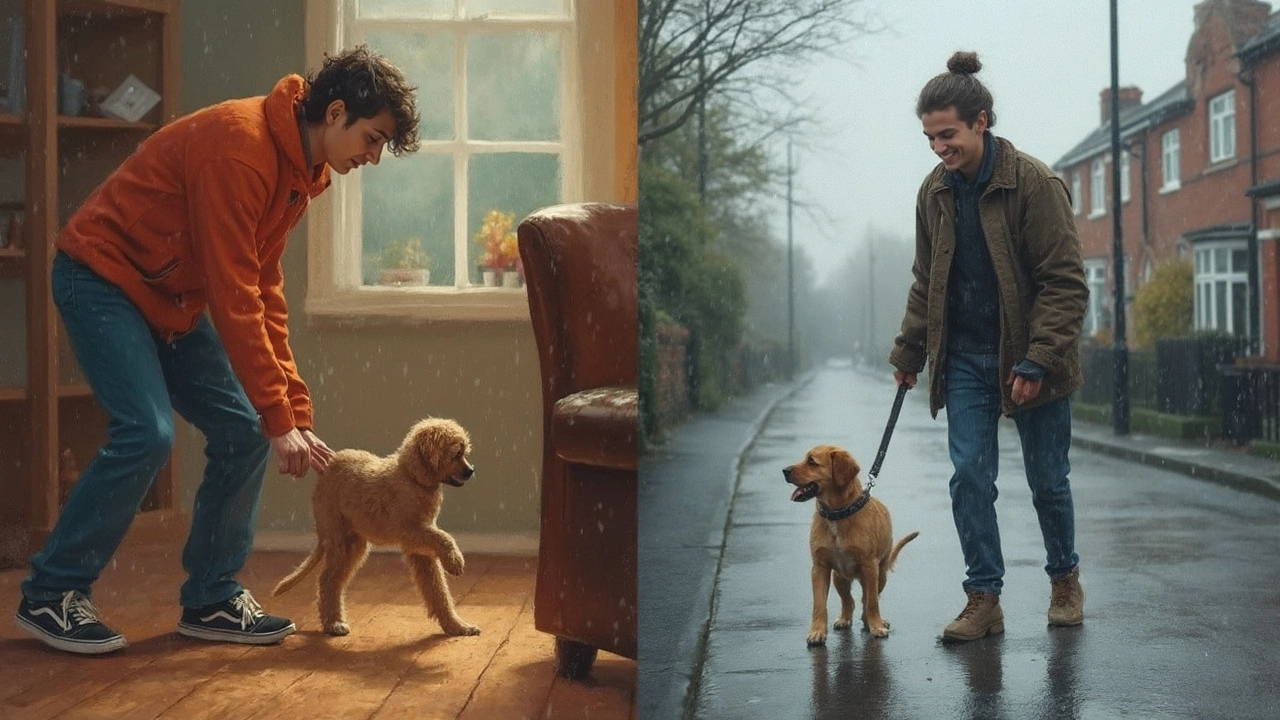
Common Mistakes and How to Avoid Them
If you feel stuck in the puppy potty training cycle, you’re not alone. Loads of new owners slip up, but fixing these everyday mistakes can make ‘puppy pee problems’ way easier to handle. Let’s get into what usually goes wrong and how to do better.
- Yelling or punishing your puppy: Scolding might make you feel better in the moment, but puppies just get scared or confused. Sometimes, punishment makes them pee in secret spots when you’re not looking, making the whole training process longer and messier.
- Cleaning with the wrong products: Bleach and many household cleaners don’t fully hide the smell of urine. Puppies have powerful noses (about 40 times better than ours), so lingering scent means they’ll probably pee in the same place again. Use cleaners made for pet accidents—enzymatic cleaners break down all the pee particles and kill the smell for good.
- Missing key potty times: A lot of accidents happen because owners forget, or don’t know, how often puppies need breaks. Puppies under six months can’t hold it very long. Typical rule: age in months plus one equals hours they can “hold it.” So a three-month-old pup needs out every four hours, even less after eating or drinking.
- Not supervising enough: Letting your puppy roam free indoors without watching them is asking for disaster. The second you look away, they’ll sneak off for a potty break in the wrong spot. Until your puppy is clearly catching on, use baby gates or keep them in the same room as you.
- Not rewarding good behavior fast enough: Puppies need feedback right away. If you wait more than a few seconds to offer praise or give a treat, they won’t connect it with peeing in the right place. Treats, toys, and cheerful praise work best when given the moment your puppy finishes their potty business outside.
Here’s a quick look at how often puppies usually need breaks, based on age:
| Age (months) | Hours Pup Can Hold It |
|---|---|
| 2 | 3 |
| 3 | 4 |
| 4 | 5 |
Making sure your puppy stays busy with puppy toys in their safe space helps too. Puppies explore with their mouths and noses, so toys give them something healthy to do and reduce the chances they’ll wander off to pee out of boredom or stress.
Fixing these mistakes isn’t complicated, but it makes all the difference between endless accidents and a well-trained, happy puppy. It’s all about catching the right moments, using the right tools, and giving your pup lots of chances to do the thing you want—right where you want them to.
